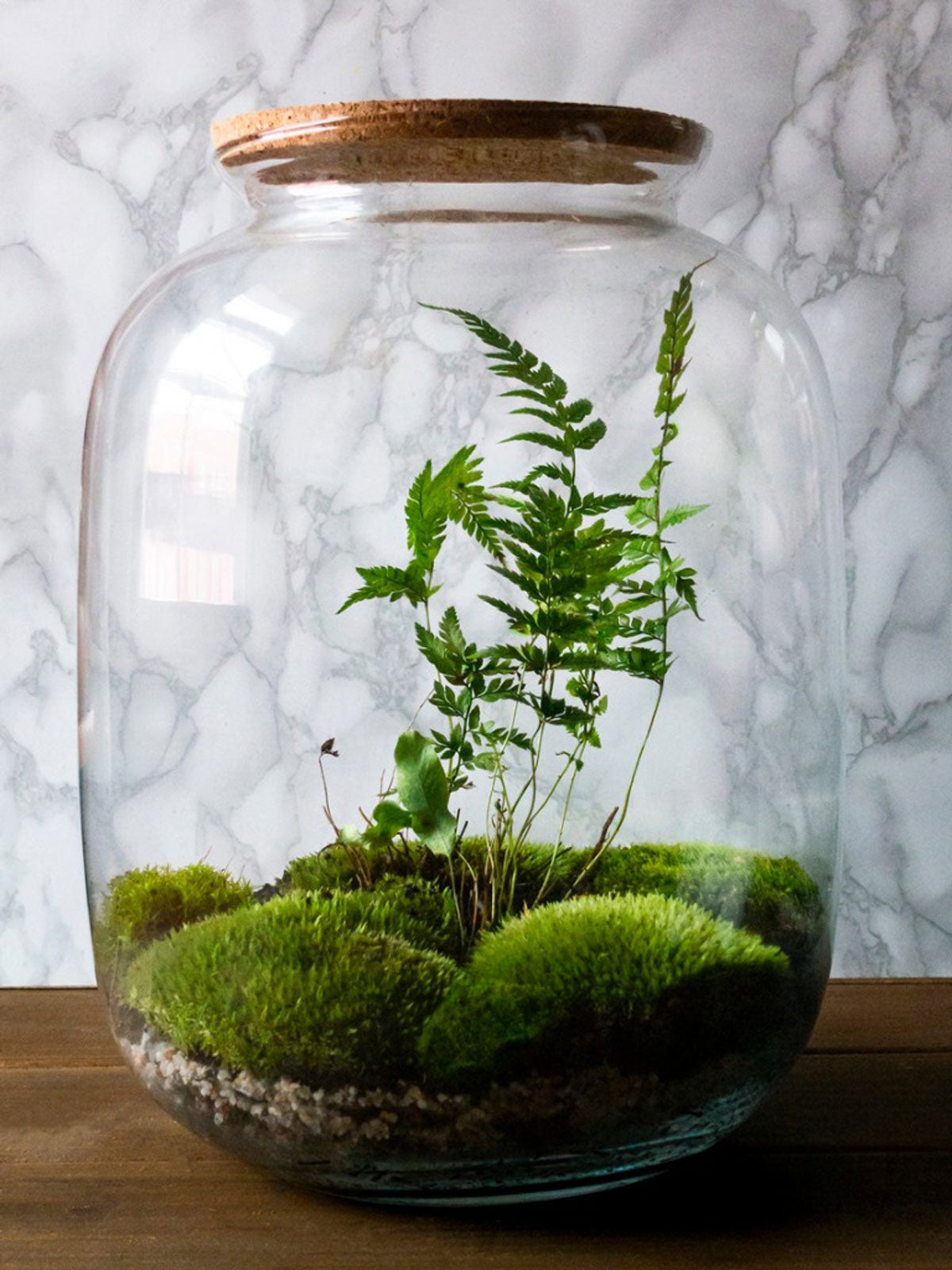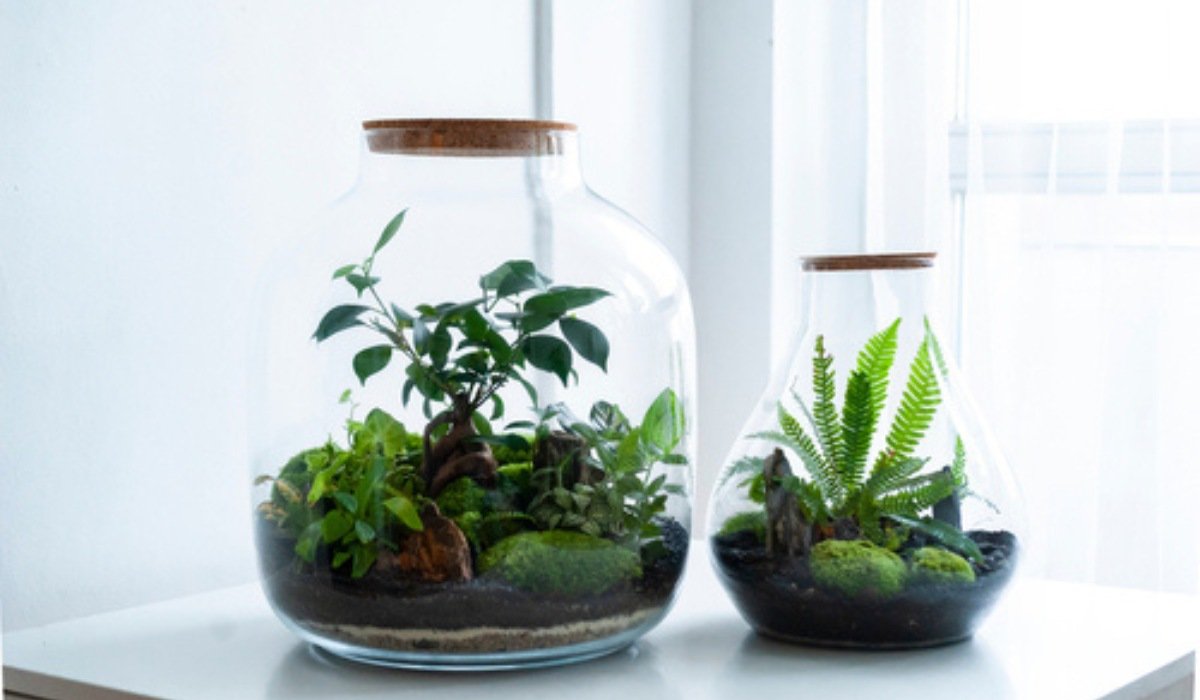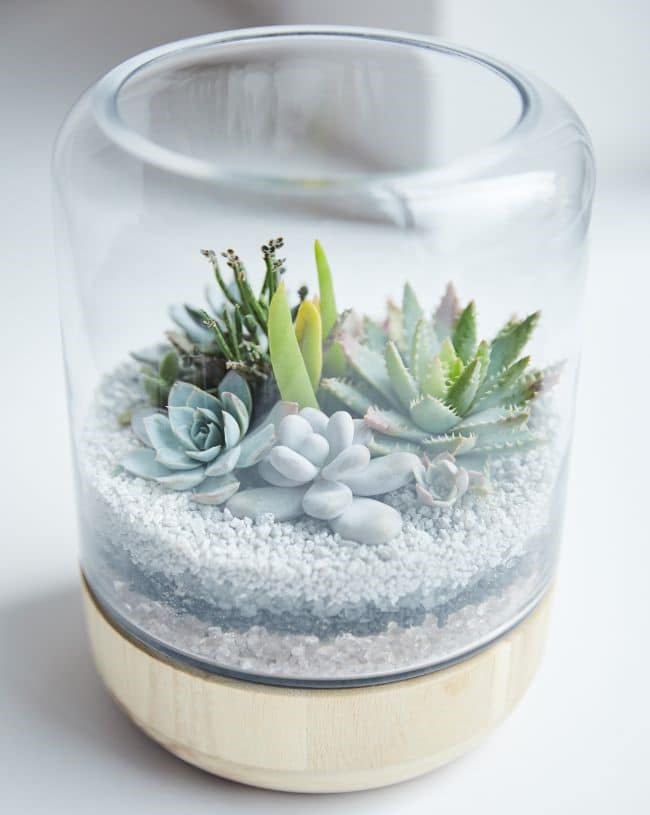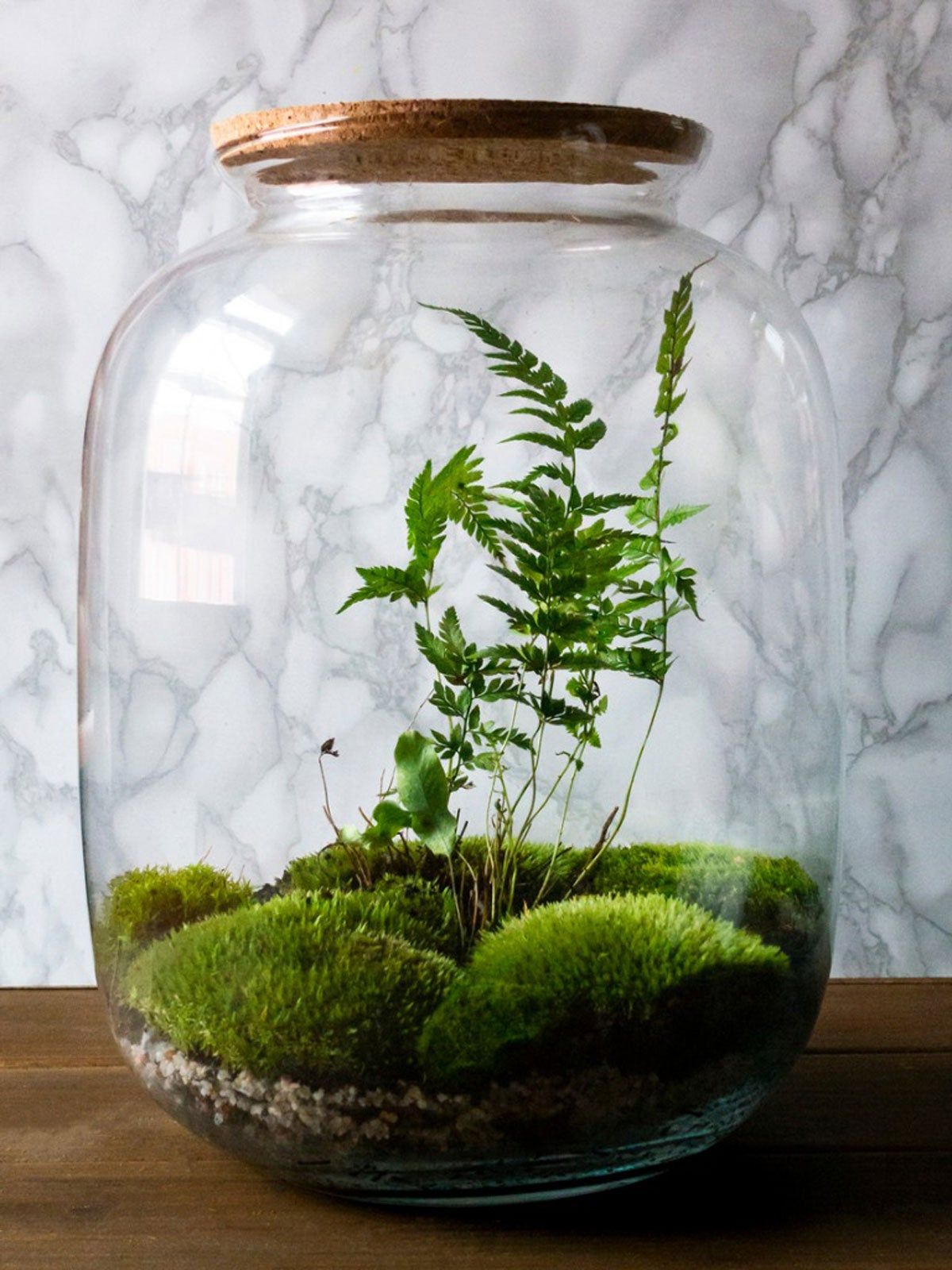Creating a Self-Sustaining Ecosystem
A terrarium is a miniature garden in a glass container, and creating a self-sustaining ecosystem is crucial for its survival. To care for a terrarium, it’s essential to understand the delicate balance of its environment. A well-designed terrarium can thrive for years with minimal maintenance, but it requires careful planning and attention to detail. When learning how to care for a terrarium, it’s vital to consider the unique characteristics of these miniature gardens.
The first step in creating a self-sustaining ecosystem is to choose the right plants, soil, and containers. Select plants that are compatible with each other and the terrarium environment. Look for plants that thrive in low-light conditions and have similar watering requirements. Some popular plants for terrariums include ferns, mosses, and air plants. Avoid using plants that require direct sunlight or high levels of maintenance.
Next, select a suitable container for your terrarium. Glass containers are ideal, as they allow for maximum light penetration and visibility. Choose a container that is large enough to accommodate the plants’ growth, but not so large that it becomes difficult to maintain. A clear glass container will also help to prevent the buildup of condensation, which can be detrimental to the plants.
Soil is another critical component of a terrarium. Use a high-quality potting soil that is designed for low-draining environments. Avoid using regular potting soil, as it can compact and prevent proper drainage. A well-draining soil will help to prevent waterlogged soil and root rot.
Once you have selected the plants, container, and soil, it’s time to assemble the terrarium. Start by adding a layer of small rocks or pebbles to the bottom of the container. This will help to improve drainage and prevent the soil from washing away. Next, add a layer of soil, followed by the plants. Finally, add a layer of decorative rocks or moss to the top of the container.
By following these steps, you can create a self-sustaining ecosystem that will thrive for years to come. Remember to monitor the terrarium’s environment and make adjustments as necessary. With proper care and attention, your terrarium will become a beautiful and thriving miniature garden.
Choosing the Right Plants for Your Terrarium
When it comes to selecting plants for your terrarium, it’s essential to choose species that thrive in low-light conditions and have similar watering requirements. This will ensure that your terrarium remains healthy and balanced, making it easier to care for. Some popular plants for terrariums include ferns, mosses, and air plants. These plants are ideal for terrariums because they are adapted to living in low-light environments and can tolerate high humidity.
Ferns are a popular choice for terrariums because they are easy to care for and can thrive in a variety of lighting conditions. They prefer high humidity and consistent moisture, making them well-suited for terrariums. Some popular species of ferns for terrariums include the maidenhair fern, the rabbit’s foot fern, and the autumn fern.
Mosses are another popular choice for terrariums because they are low-maintenance and can thrive in low-light conditions. They prefer high humidity and consistent moisture, making them well-suited for terrariums. Some popular species of mosses for terrariums include sphagnum moss, peat moss, and hypnum moss.
Air plants are a unique and interesting choice for terrariums because they don’t require soil to grow. They absorb moisture and nutrients through their leaves, making them well-suited for terrariums. Some popular species of air plants for terrariums include tillandsia, bromeliads, and orchids.
When selecting plants for your terrarium, it’s essential to consider their compatibility with each other and the terrarium environment. Choose plants that have similar watering requirements and can thrive in the same lighting conditions. Avoid mixing plants that require different levels of care, as this can create an unbalanced environment and make it difficult to care for the terrarium.
By choosing the right plants for your terrarium, you can create a beautiful and thriving miniature garden that requires minimal maintenance. Remember to research the specific needs of each plant species and choose plants that are compatible with each other and the terrarium environment. With proper care and attention, your terrarium will become a stunning and self-sustaining ecosystem.
Understanding the Watering Needs of Your Terrarium
Watering is one of the most critical aspects of terrarium care. Overwatering and underwatering can both be detrimental to the health of your terrarium plants. To care for your terrarium effectively, it’s essential to understand the watering needs of your plants and the terrarium environment.
The key to proper watering is to maintain a consistent level of moisture in the terrarium. This can be achieved by watering your terrarium sparingly, but thoroughly. Water your terrarium when the soil feels dry to the touch, but not so dry that it cracks. Avoid getting water on the leaves or crown of the plants, as this can cause rot and other problems.
One of the most common mistakes people make when caring for a terrarium is overwatering. This can lead to a range of problems, including root rot, mold, and pest infestations. To avoid overwatering, make sure to check the moisture level of the soil regularly. If the soil feels waterlogged or soggy, it’s best to wait a few days before watering again.
Underwatering can also be a problem in terrariums, especially in dry environments. If the soil feels extremely dry or cracked, it’s likely that your terrarium needs more water. However, be careful not to overwater, as this can cause more harm than good.
To monitor the moisture levels in your terrarium, you can use a moisture meter or check the soil manually. If you’re unsure about the moisture level, it’s always best to err on the side of caution and wait a few days before watering again.
Another important aspect of terrarium care is humidity. Terrariums thrive in humid environments, typically between 40-60% relative humidity. To maintain the right level of humidity, you can cover the terrarium with a clear plastic bag or a cloche. This will help to retain moisture and create a humid microclimate.
By understanding the watering needs of your terrarium and maintaining a consistent level of moisture, you can create a healthy and thriving environment for your plants. Remember to monitor the moisture levels regularly and adjust your watering schedule accordingly. With proper care and attention, your terrarium will become a stunning and self-sustaining ecosystem.
Providing the Right Amount of Light for Your Terrarium
Lighting is a crucial aspect of terrarium care, and providing the right amount of light is essential for the health and well-being of your plants. Terrariums can thrive in a variety of lighting conditions, but most plants prefer bright, indirect light. Direct sunlight can be too intense for terrariums, and can cause the temperature to fluctuate and the plants to become scorched.
To provide the right amount of light for your terrarium, it’s essential to understand the lighting requirements of your plants. Some plants, such as ferns and mosses, prefer low to moderate light, while others, such as air plants and succulents, can tolerate brighter light. Research the specific lighting requirements of your plants to ensure you’re providing the right amount of light.
East- and west-facing windows are ideal for terrariums, as they provide bright, indirect light. Avoid placing your terrarium in a south-facing window, as the direct sunlight can be too intense. If you don’t have a window with indirect light, you can also use grow lights to provide the necessary light for your plants.
It’s also important to consider the color temperature of the light when caring for your terrarium. Cool white light, which is typically in the range of 5000-6500K, is ideal for most plants. Avoid using warm white light, which is typically in the range of 2700-3000K, as it can promote the growth of algae and other unwanted organisms.
In addition to providing the right amount of light, it’s also essential to maintain a consistent light schedule. Most plants prefer 12-14 hours of light per day, and consistent lighting can help regulate the plant’s internal clock. Avoid placing your terrarium in a location with fluctuating light, such as near a door or window with direct sunlight.
By providing the right amount of light for your terrarium, you can create a healthy and thriving environment for your plants. Remember to research the specific lighting requirements of your plants and maintain a consistent light schedule to ensure the best results.
Maintaining the Right Temperature for Your Terrarium
Maintaining a consistent temperature is crucial for the health and well-being of your terrarium plants. Most plants prefer daytime temperatures between 65-75°F (18-24°C) and nighttime temperatures around 55-65°F (13-18°C). Avoid placing your terrarium near heating or cooling vents, fireplaces, or drafty windows, as this can cause temperature fluctuations.
Some plants, such as tropical plants, may require warmer temperatures, while others, such as succulents, may prefer cooler temperatures. Research the specific temperature requirements of your plants to ensure you’re providing the right conditions.
To maintain a consistent temperature, you can use a thermometer to monitor the temperature of your terrarium. Avoid placing your terrarium in direct sunlight, as this can cause the temperature to fluctuate. Instead, place your terrarium in a bright, indirectly lit area.
It’s also important to avoid extreme temperatures, such as those above 80°F (27°C) or below 50°F (10°C). These temperatures can cause stress to your plants and lead to disease or pest problems.
In addition to maintaining a consistent temperature, it’s also important to maintain a consistent humidity level. Most plants prefer a humid environment, typically between 40-60% relative humidity. You can use a humidifier to maintain the right humidity level, especially in dry environments.
By maintaining a consistent temperature and humidity level, you can create a healthy and thriving environment for your terrarium plants. Remember to research the specific temperature and humidity requirements of your plants to ensure you’re providing the right conditions.
Fertilizing and Pruning Your Terrarium Plants
Fertilizing and pruning are essential maintenance tasks for terrarium plants. Fertilizing provides the necessary nutrients for healthy growth, while pruning helps maintain shape and promotes healthy growth. However, it’s essential to fertilize and prune your terrarium plants carefully to avoid overfertilizing and damaging the plants.
When fertilizing your terrarium plants, use a balanced, water-soluble fertilizer that is specifically designed for terrariums. Dilute the fertilizer to half the recommended strength to avoid burning the roots of the plants. Apply the fertilizer once a month, taking care not to get any on the leaves or crown of the plants.
Pruning is also an essential maintenance task for terrarium plants. Prune your plants regularly to maintain shape and promote healthy growth. Use a pair of clean, sharp scissors or pruning shears to prune the plants, taking care not to damage the leaves or stems.
When pruning, remove any dead or dying leaves or stems, as these can harbor pests and diseases. Also, remove any leggy or overgrown stems to maintain shape and promote healthy growth. Prune your plants in the spring and summer months when they are actively growing, and avoid pruning in the fall and winter months when they are dormant.
It’s also essential to monitor your terrarium plants for pests and diseases, and take action promptly if you notice any problems. Check your plants regularly for signs of pests or diseases, such as white powdery patches, black spots, or sticky substance on the leaves.
By fertilizing and pruning your terrarium plants carefully, you can promote healthy growth and maintain a thriving miniature garden. Remember to research the specific fertilizing and pruning requirements of your plants to ensure you’re providing the right conditions.
Pest Control and Common Problems in Terrariums
Despite their closed environment, terrariums can still be susceptible to pests and problems. Regular monitoring and maintenance can help prevent these issues, but it’s essential to know how to identify and address them if they do occur.
One of the most common pests found in terrariums is spider mites. These tiny, spider-like insects can cause yellowing or bronzing of the leaves and fine webbing on the plants. To control spider mites, increase the humidity around the terrarium and spray the plants with a mild insecticidal soap.
Mealybugs are another common pest found in terrariums. These small, white, cottony insects can cause stunted growth and yellowing of the leaves. To control mealybugs, remove any infested plants and treat the remaining plants with a mild insecticidal soap.
Mold is a common problem in terrariums, particularly in humid environments. To prevent mold, ensure good air circulation around the terrarium and avoid overwatering. If mold does occur, remove any affected plants and treat the remaining plants with a fungicide.
Other common problems in terrariums include scale, aphids, and whiteflies. Regular monitoring and maintenance can help prevent these issues, but it’s essential to know how to identify and address them if they do occur.
To prevent pests and problems in terrariums, ensure good air circulation, avoid overwatering, and monitor the plants regularly. Regular pruning and fertilization can also help promote healthy growth and prevent pests and problems.
By being aware of the common pests and problems that can occur in terrariums, you can take steps to prevent them and ensure a healthy and thriving miniature garden.
Troubleshooting Common Terrarium Problems
Despite proper care and maintenance, terrariums can still experience problems. Condensation, mold, and dying plants are common issues that can arise. In this section, we will provide a troubleshooting guide to help you identify and address these problems.
Condensation is a common problem in terrariums, particularly in humid environments. To prevent condensation, ensure good air circulation around the terrarium and avoid overwatering. If condensation does occur, remove any excess water from the terrarium and increase air circulation.
Mold is another common problem in terrariums, particularly in humid environments. To prevent mold, ensure good air circulation around the terrarium and avoid overwatering. If mold does occur, remove any affected plants and treat the remaining plants with a fungicide.
Dying plants are a common problem in terrariums, particularly if the plants are not receiving enough light or water. To prevent dying plants, ensure that the terrarium is receiving enough light and water. If plants are dying, remove any dead or dying plants and replace them with new ones.
Other common problems in terrariums include spider mites, mealybugs, and scale. Regular monitoring and maintenance can help prevent these issues, but it’s essential to know how to identify and address them if they do occur.
To prevent problems in terrariums, ensure good air circulation, avoid overwatering, and monitor the plants regularly. Regular pruning and fertilization can also help promote healthy growth and prevent problems.
By following these troubleshooting tips, you can identify and address common problems in terrariums and keep your miniature garden thriving.


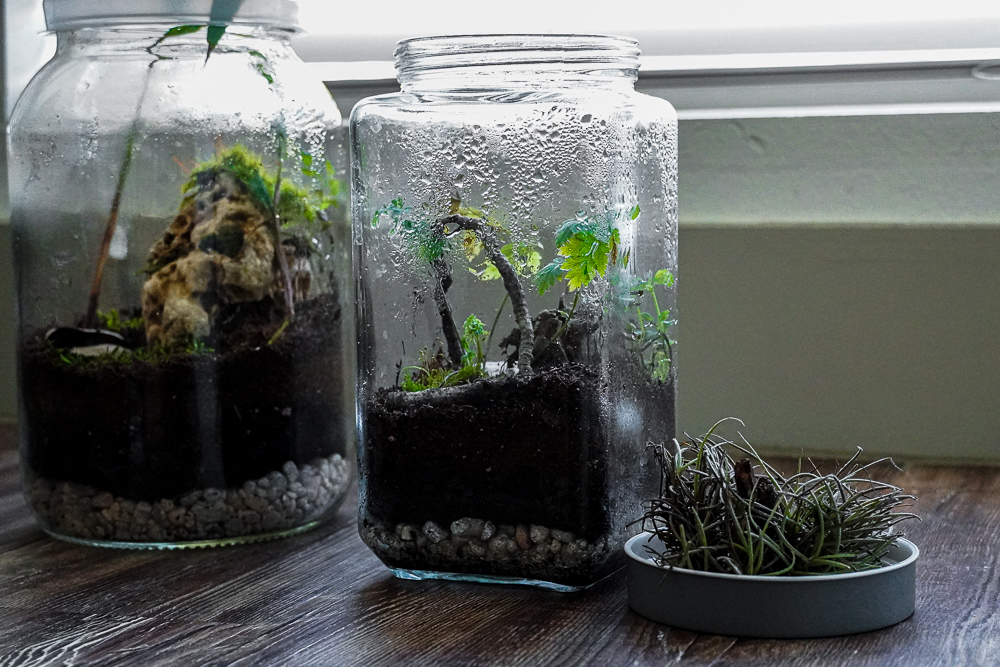

:max_bytes(150000):strip_icc()/how-to-make-terrariums-848007-21-1b4bee47a96a426d8e3b1a021fdcd65d.jpg)
